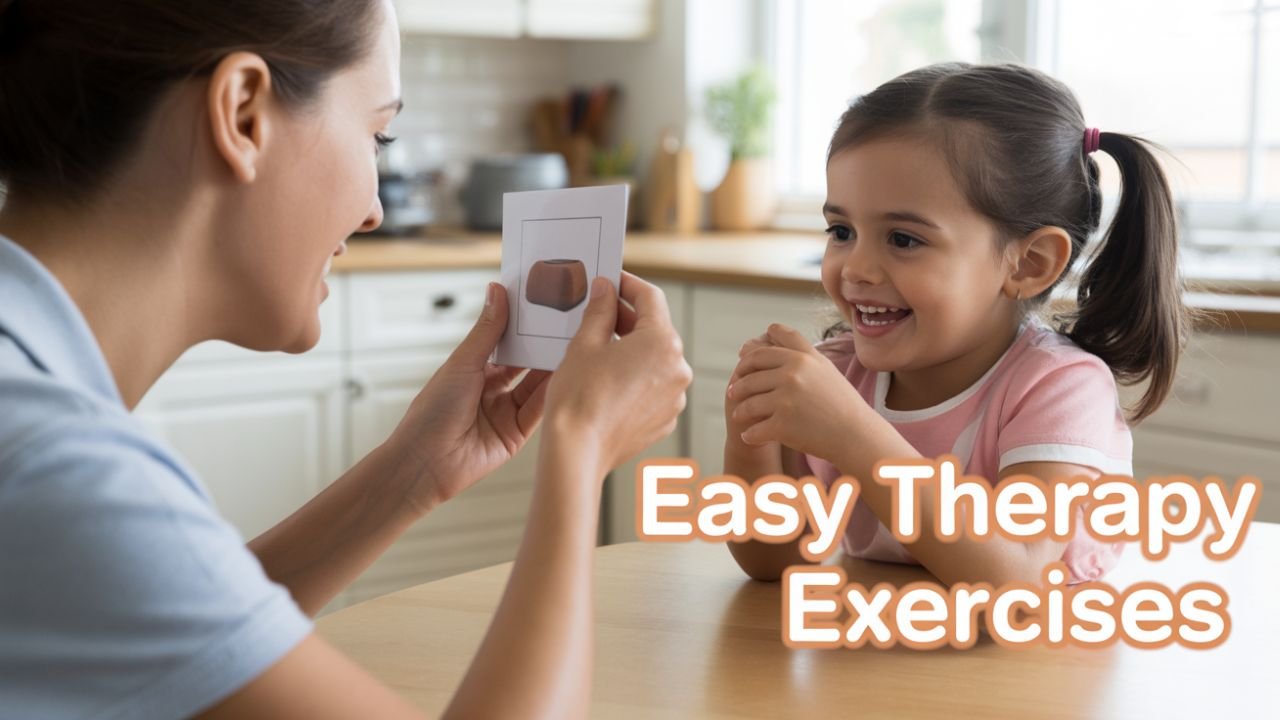Speech therapy plays a vital role in enhancing children’s language and communication skills. But it shouldn’t be limited to a clinic or a therapist. In fact, the involvement of parents and caregivers is crucial in children’s language development. Through small exercises and play in everyday activities, children learn quickly and begin to apply new skills to their daily lives. Research from Vanderbilt University has shown that efforts made by parents at home can significantly improve children’s language and communication skills.
If you find it challenging to help your child with speech therapy, this article is for you. Here, we’re sharing 15 easy and effective speech therapy exercises you can do from the comfort of your home and boost your child’s progress exponentially.
Why is practicing speech therapy at home beneficial?
Speech therapy shouldn’t be limited to weekly 30- or 60-minute sessions. Language skills require regular practice. When you practice at home with your child, you turn everyday moments into learning opportunities. For example, you can practice letters and sounds while cooking in the kitchen, or play word games while bathing. Simple exercises like these help children gain confidence, and speech practice becomes a part of their daily lives, not just limited to the therapist’s office.
1. Give Children Choices
You know your child best. That’s why you can often anticipate their needs and desires. However, constantly making choices for them reduces their opportunity to practice language. Therefore, giving children choices is crucial. You could ask, “Do you want to play with blocks or bubbles?” This helps children learn to express their desires independently using language and reduces frustration when they guess incorrectly.
2. Model Simple Language
Imitation is not just a form of praise, it is also an effective practice for helping children learn new sounds and words. Children learn language by listening to those around them. When you demonstrate simple words and sentences to your child, they will gradually begin to repeat them. When teaching an object its name, bring it close to your mouth so that the child begins to associate the object with the sound of its name.
3. Use Parallel Talk
Creating an environment rich in language is essential for children’s development. Parallel communication is a way to describe what you’re doing with your voice. For example, while cooking, say, “I’m stirring the batter. Now I’m pouring it into the pan. Oh, the oven is hot!” Or while playing, say, “Your car is so loud, vroom!” This helps children learn to connect actions and language and gradually begin to use parallel communication themselves.
4. Extend the Language
If your child only says “no,” you can use it in more complex sentences. For example, after “no,” say, “no, cookie” or “no, juice.” Similarly, if the child says “more,” change it to “more bubbles.” This type of extension helps children progress from one-word sentences to two- or three-word sentences.
5. Use Visual Aids
Visual aids are extremely effective, especially for preschool or toddler children. Pictures of daily routines, flashcards, or family photo books help children learn the names of objects and understand the day’s activities. For example, let children choose which game to play after snack time.
6. Expectant Waiting
This technique gives children the excitement and encouragement to respond. For example, if you stop a bubble-blowing game and say, “Want more?”, the child will express their desire with words or gestures. Similarly, while driving, stop by saying, “Ready, set…” and give the child a chance to say, “Go!”
7. Provide Positive Reinforcement
Simply telling children “no” or “don’t” isn’t enough. Praising their small successes is crucial. For example, saying, “You cleaned up your toys yourself, that’s great!” or “Wow, you ate your broccoli! That’s amazing!” This encourages children to use more language.
8. Offer a Little Challenge (Sabotage)
Sometimes mild frustration can motivate children to communicate. For example, keep their favorite toy a little further away or deliberately offer the wrong option. This helps children learn to use the correct word or gesture.
9. Repeat Practice
Repetition is key to language learning. Whether you’re singing a song or playing a word game, constant repetition helps children learn new words, expand their vocabulary, and improve communication skills.
10. Teach Sign Language
Learning sign language is very useful for toddlers. It helps them ease into the process of speaking. Initially, start with the basics.Teach familiar gestures such as “help,” “finish,” “more,” “eat,” “drink,” “go,” and “stop.”
11. Sing Songs
Songs are a great way for children to learn new words. For example, “Wheels on the Bus” teaches direction words, and “Head, Shoulders, Knees, and Toes” teaches body parts. Adding gestures to the song increases a child’s vocabulary and imitation skills.
12. Use the Contingency Technique
This technique combines a child’s “wants” and “needs.” For example, “First read the book, then play dinosaur.” This teaches them to follow instructions and receive the desired reward.
13. Eliminate Distractions
Excessive noise or distractions can disrupt children’s learning process. Keep TVs, mobile phones, or other distractions away during training.
14. Read Books
Reading books is an excellent medium for language development. Choose books with simple words and pictures for children. Ask children questions while reading and encourage them to repeat the words.
15. Incorporate Fun and Laughter
Playful laughter and jokes enhance the enjoyment of language learning for children. Make funny sounds, make faces, and praise their efforts. This encourages children to communicate and makes learning fun.
Conclusion
Speech therapy shouldn’t be limited to the therapist. Simple exercises done by parents and caregivers at home can drastically improve children’s language and communication skills. The 15 exercises above can be easily incorporated into everyday activities. These techniques not only build children’s confidence but also make language learning a fun and natural process for them.
